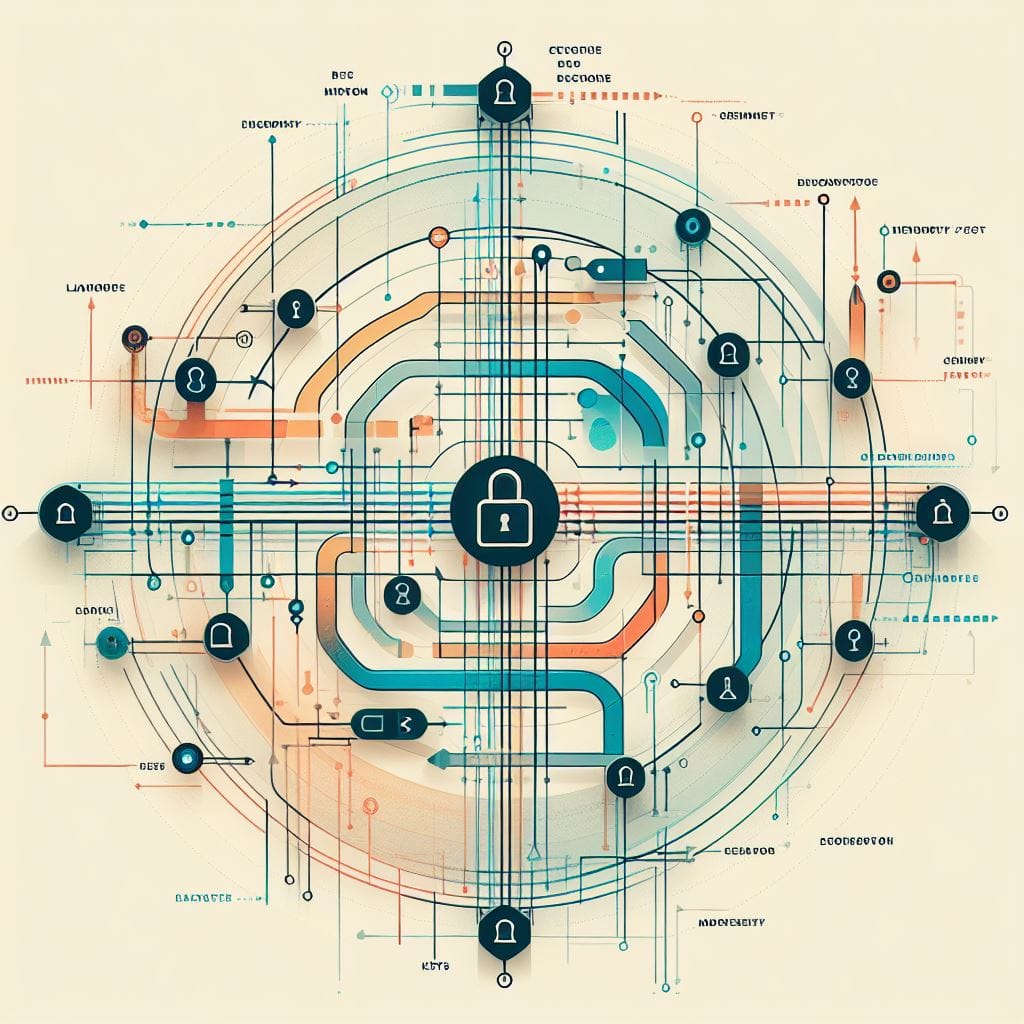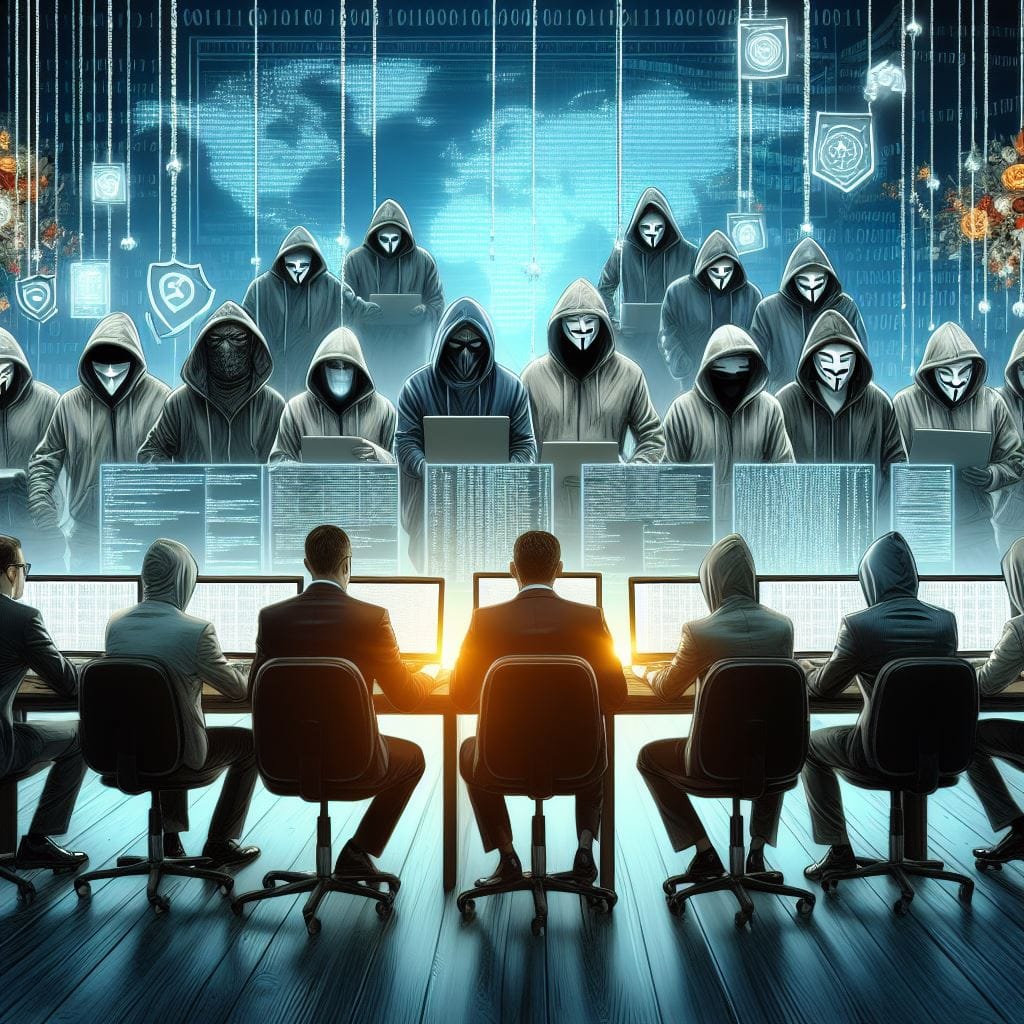Examining the historical context, the rise of Cypherpunks, legislative battles, and the lasting impact on global encryption policies.
Introduction to the First Crypto War in the 90s:
In the early days of the internet, a silent but profound struggle unfolded beneath the surface, a battle that would become the cornerstone of the present-day cryptocurrency industry. At the core of this conflict was cryptography. Recognized as the First Crypto War, this historical confrontation brought together a diverse set of participants: brilliant mathematicians, dedicated Cypherpunks, and resilient government agents. Each sought influence over the destiny of the online space.
This War remains an intriguing chapter, rich with dramatic events and significant players whose contributions resonate in the foundations of today's cryptocurrency world.
Key Players in the First Crypto War
Cryptography experienced significant advancements in the 90s, capturing widespread attention. Groups like Cypherpunks and civil liberty proponents emerged, advocating for the use of encryption to safeguard online privacy and freedom. Concerns arose within the US government, fearing that unregulated encryption might empower criminals and terrorists by enabling covert operations.
The key players and factions in this struggle for privacy were:
- The US Government: The Clinton Administration and intelligence agencies, including the National Security Agency (NSA), actively sought increased control over encryption technology and surveillance capabilities. Their primary objectives were to uphold national security and combat criminal activities.
- Privacy Advocates: Organizations such as the Electronic Frontier Foundation (EFF) and the American Civil Liberties Union (ACLU) staunchly opposed government efforts to restrict encryption. Viewing these attempts as encroachments on personal freedoms and privacy, they worked tirelessly to promote the use of encryption for safeguarding rights.
- Cryptography Researchers, Enthusiasts, and Cypherpunks: Visionaries like Phil Zimmermann played key roles in advocating for encryption use while resisting government constraints. The Cypherpunks, a loosely connected group of cryptography advocates, technologists, and activists, fervently championed the capabilities of cryptography in protecting civil liberties, privacy, and the freedom of speech.
The Emergence of PGP and the Crusade for Privacy
Developed by Phil Zimmermann, PGP became a symbol of the Cypherpunk movement's commitment to empowering individuals with cryptographic tools. Released in 1991, PGP revolutionized encrypted communication by allowing people to keep their messages private. The software utilized a combination of symmetric-key cryptography and public-key cryptography. When a user sent a message using PGP, the software generated a random symmetric key for that specific message, encrypting its content. Simultaneously, PGP used the recipient's public key to encrypt the randomly generated symmetric key. This dual-layered encryption process ensured secure communication.
Phil Zimmerman, creator of PGP: "If privacy is outlawed, only outlaws will have privacy."

Examination of the Clipper chip proposal.
As the Cypherpunks and PGP encryption tools gained momentum, the United States government grew increasingly concerned about the potential consequences of widespread cryptography use. The Clipper Chip emerged as a prominent adversary to the digital privacy movement. In 1993, the Clinton administration introduced the Clipper Chip as a hardware encryption device designed for telecommunication systems. While the chip served as an encryption tool for securing telephone communications, it came with a stipulation—a private key retained by government agencies. This key granted them the ability to decrypt and access any communication encrypted by the chip, but only under legal authorization, such as court orders. This setup aimed to strike a balance, allowing law enforcement and intelligence agencies to access decryption keys when necessary and authorized by legal processes.
The government's argument for key escrow and law enforcement access to encryption keys was rooted in concerns over national security and law enforcement capabilities. The U.S. government, particularly the Clinton administration and intelligence agencies like the National Security Agency (NSA), contended that unregulated encryption could potentially aid criminals and terrorists by providing them with secure communication channels impervious to surveillance. The concept of key escrow involved storing a copy of encryption keys with a trusted third party, often a government agency, ensuring that these keys could be accessed under legal circumstances, such as during criminal investigations.
Public Backlash and Dissent
This proposal faced fierce opposition from privacy advocates. Groups like the Electronic Frontier Foundation (EFF) and the American Civil Liberties Union (ACLU) argued that such a key escrow system posed significant threats to privacy. Cypherpunks vehemently opposed any government attempts to control or regulate encryption. They saw encryption as a crucial tool for protecting privacy and promoting freedom of speech.
The clash between the government's push for key escrow and the opposition from privacy advocates and Cypherpunks led to legislative battles. The debate unfolded in the form of proposed regulations and policies aimed at controlling the use and export of encryption technologies. The most notable example of this was the Clipper Chip.
The Global Impact of the First Crypto War
The War wasn't confined to the borders of the United States; its ripples reverberated globally, shaping international perspectives on digital privacy and encryption. As the U.S. government grappled with the regulation of cryptography, other countries became both collaborators and resistors.
Collaboration and Resistance from Other Countries:
Various nations observed the U.S.'s endeavours to control encryption technology with keen interest. Some chose to collaborate with the United States, aligning their policies with the government's stance on encryption restrictions. This collaboration often stemmed from shared concerns about national security and the perceived threats posed by unregulated encryption.
Conversely, other countries resisted the push for encryption control. Privacy-conscious nations and those advocating for unrestricted access to cryptographic tools opposed the U.S. government's attempts to limit individual freedoms. Cryptography, viewed as a tool for protecting civil liberties, became a focal point for international debates on the balance between privacy rights and state security.
Reflection on the Global Significance of the Conflict:
The conflict sparked a global reflection on the implications of restricting or embracing cryptographic technologies. Governments and citizens worldwide began to contemplate the delicate balance between individual privacy and the collective need for security. The conflict raised fundamental questions about the nature of digital rights, prompting countries to assess their own policies regarding the use and regulation of encryption.

Resolution and Aftermath:
The War did not conclude with a definitive resolution but rather set the stage for ongoing discussions and developments. While certain policies were implemented, the conflict spurred a continual evolution of cryptographic practices and regulations. Countries, recognizing the importance of adapting, revisited their stances on encryption over the subsequent years.
The world witnessed an increasing recognition of the essential role of encryption in safeguarding individual privacy. The conflict prompted a shift in the narrative, with many nations acknowledging the need for a balanced and rights-respecting approach to cryptographic regulations. The echoes of which continue to resonate, influencing international discussions on digital rights, encryption, and the delicate interplay between security and personal freedoms.
Analysis of How the First Crypto War Influences Current Debates
Connection to Modern Issues:
The legacy of the War is evident in the present-day debates over encryption backdoors. The government's attempts to introduce key escrow systems find parallels in current discussions where authorities advocate for mechanisms that would provide access to encrypted data when deemed necessary for law enforcement.
Privacy Concerns:
As technology advances, the stakes are higher than ever, with issues such as mass surveillance, data breaches, and the collection of personal information dominating headlines. The fundamental question of where to draw the line between national security imperatives and the right to individual privacy persists.
Final Thoughts on the Ongoing Importance of Encryption:
The importance of encryption remains paramount. Encryption, as a cornerstone of privacy, continues to be a safeguard against unwarranted intrusions and key for preserving the rights of individuals.
The ongoing relevance of encryption is underscored by the modern challenges we face — from privacy online to the increasing sophistication of cyber threats. As we engage in contemporary debates shaped by the lessons of the past, the War reminds us that the principles of privacy and the responsible use of cryptographic technologies are integral to preserving the essence of a free and secure digital society.






Comments ()